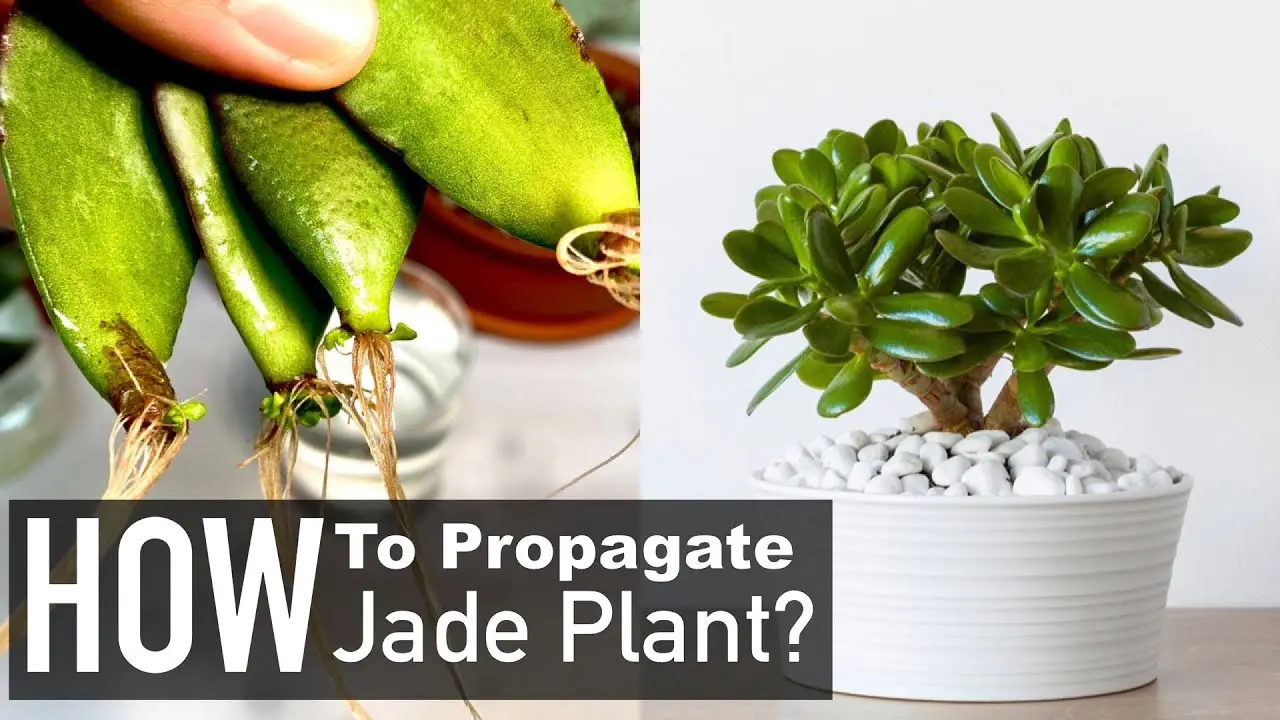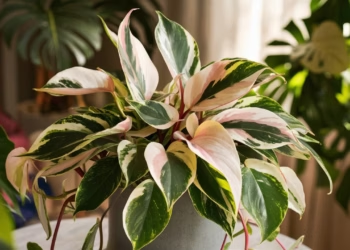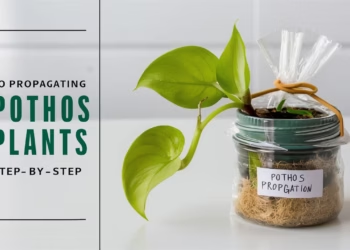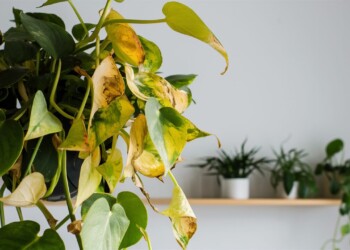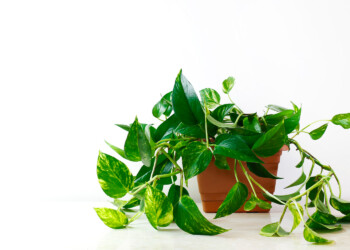Hey there, green thumbs and aspiring plant parents! Are you ready to dive into the enchanting world of jade plants? If you’ve ever wondered about the best ways to propagate these marvelous succulents, you’re in for a treat. The jade plant, also known as Crassula ovata, is not just a pretty face in the plant kingdom-it’s a resilient, low-maintenance beauty that can thrive in various conditions. Today, we’re spilling the dirt on the best methods to propagating jade plant and watch it multiply like a leafy magician!
So, roll up your sleeves, grab your gardening gloves, and let’s get our hands dirty with the best ways to propagating jade plant!
Table Of Contents
The Basics: Understanding Jade Plant Propagation
Before we embark on this leafy journey, let’s brush up on the basics. Propagation is the process of creating new plants from existing ones, and unlike some finicky plants, jade plants are quite forgiving when it comes to propagation timing. While it’s feasible to propagate them throughout the year, spring and summer are optimal seasons. During these periods of heightened growth, warmer temperatures and increased sunlight facilitate faster rooting, ensuring a higher success rate, it’s like nature’s way of handing out green gifts! Here are some fundamental methods:
- Leaf Cuttings: This classic method involves snipping a healthy leaf from your mature jade plant and coaxing it to grow roots.
- Stem Cuttings: Take a leap beyond leaves and try stem cuttings. This technique involves slicing a section of the stem, encouraging both roots and new growth.
- Offshoots or Babies: Sometimes, jade plants produce tiny replicas of themselves, known as offshoots or babies. These can be gently separated from the main plant and transplanted.
Jade plant propagation from leaf
Jada leaf propagation, while relatively slower, offers a rewarding journey as you witness new growth emerge from the leaf’s base. Patience is key during this process, as roots gradually develop from the callused end, eventually giving rise to a new jade plant.
Step 1: Choose Wisely
When it comes to leaf cuttings, not all leaves are created equal! Opt for a healthy, mature leaf with no signs of damage or disease. The best candidates are those that are firm, plump, and vibrant in color.
Step 2: Snip and Strip
Grab your pruning shears and snip a healthy leaf from the mother plant. Aim for a clean cut, about 2-4 inches in length. Once you’ve got your leaf, gently strip away the lower leaves, leaving a bare stem.
Step 3: Dry and Callus
Now, here’s a ninja move for success! Allow the cut end of your leaf to air dry for a day or two. This creates a callus that helps prevent rot when you plant it. It’s like giving your jade leaf a superhero shield!
Step 4: Pot it Up!
Once your leaf is calloused, it’s showtime! Plant it in a well-draining succulent mix, burying the bare stem in the soil. Water sparingly and place it in bright, indirect light. Before you know it, roots will sprout, and your jade plant family will be on the rise!

Water Propagation
While water propagation offers convenience and simplicity, it’s essential to note that transitioning rooted cuttings to soil may pose challenges. Therefore, reserve water propagation as a last resort, opting for soil-based methods whenever feasible.
Step 1:
Utilize a sterile cutting tool to sever a healthy stem from the parent plant.
Step 2:
Allow the cut end to dry in a well-ventilated area until a callus forms.
Step 3:
Submerge the callused end of the stem in a container filled with water, ensuring it remains submerged.
Step 4:
Monitor the water level and change it regularly to prevent stagnation and maintain optimal conditions.

Stem Cuttings: propagating jade plant from stem
Stem propagation accelerates the growth process, yielding a more substantial plant in a shorter timeframe. By carefully following the outlined steps, you’ll witness robust root development and prolific growth from the planted stem.
Step 1: Find Your Cutting
For stem cuttings, look for a healthy, non-flowering stem on your jade plant. The ideal cutting is around 2-6 inches long, with a few leaves attached.
Step 2: Remove Leaves and Dry
Similar to leaf cuttings, strip away the lower leaves from your stem cutting. Allow the cut end to dry and callus for a day or two. Remember, we’re building that superhero shield against rot!
Step 3: Plant with Precision
Once your stem is prepped and ready, plant it in well-draining soil, burying the cut end. Water lightly and place it in a spot with bright, indirect light. This is where the real magic happens as your stem develops roots and grows into a new jade marvel!

Offshoots or Babies: A Jade Plant Family Reunion!
Sometimes, Mother Nature takes the wheel, and your jade plant surprises you with adorable offshoots. Here’s how to propagate those green babies:
Step 1: Identify and Separate
When you spot a tiny jade plant growing alongside the main one, it’s time to play plant parent! Gently separate the offshoot from the parent plant, making sure it has its roots intact.
Step 2: Potting Party
Give your offshoot its own pot and plant it in well-draining soil. Water lightly, and voila! You’ve just welcomed a new member to your jade plant family.

And there you have it, fellow plant enthusiasts-the best ways to propagate your jade plant and create a flourishing family of green wonders! Whether you’re a leaf-cutting maestro, a stem-cutting sorcerer, or simply letting nature do its thing with offshoots, the key is to enjoy the process.
FAQs
Is it better to propagate a jade plant in water or soil?
Jade plants can be propagated in both water and soil, but soil propagation is generally more successful. Propagating in soil helps the cutting develop roots that are better adapted to the eventual growing medium. Water propagation may work for some, but the transition to soil can be more challenging for the roots.
Can you grow a jade plant from a cutting?
Yes, you can grow a jade plant from a cutting. Jade plants are commonly propagated through stem or leaf cuttings. Allow the cut end to callus for a few days before planting it in well-draining soil. Keep the soil consistently moist until roots develop, and then gradually reduce watering as the plant establishes.
Do jade plants need sun?
Yes, jade plants thrive in bright, indirect sunlight. They can tolerate some direct sunlight, especially morning sunlight, but prolonged exposure to intense sunlight may lead to leaf burn. If grown indoors, place them near a window with filtered or indirect light for optimal growth.
How long does it take for a jade cutting to callus?
It generally takes about 1 to 3 days for the cut end of a jade plant cutting to callus. Allowing the cut end to form a callus helps prevent rot when the cutting is planted. Once the callus has formed, the cutting can be planted in well-draining soil to develop roots.
How often should you water Jade?
Jade plants prefer to be kept on the drier side. Water them when the top inch of the soil feels dry. Typically, this might mean watering every 2-3 weeks, but frequency can vary based on factors like temperature, humidity, and the size of the pot. Ensure proper drainage to prevent overwatering.
Can jade handle full sun?
While jade plants can tolerate some direct sunlight, they generally prefer bright, indirect light. Prolonged exposure to intense, full sun can lead to leaf burn, especially in hot climates. If grown outdoors, providing some protection from the harsh afternoon sun is beneficial. Indoors, place them near a south or west-facing window with filtered light.
